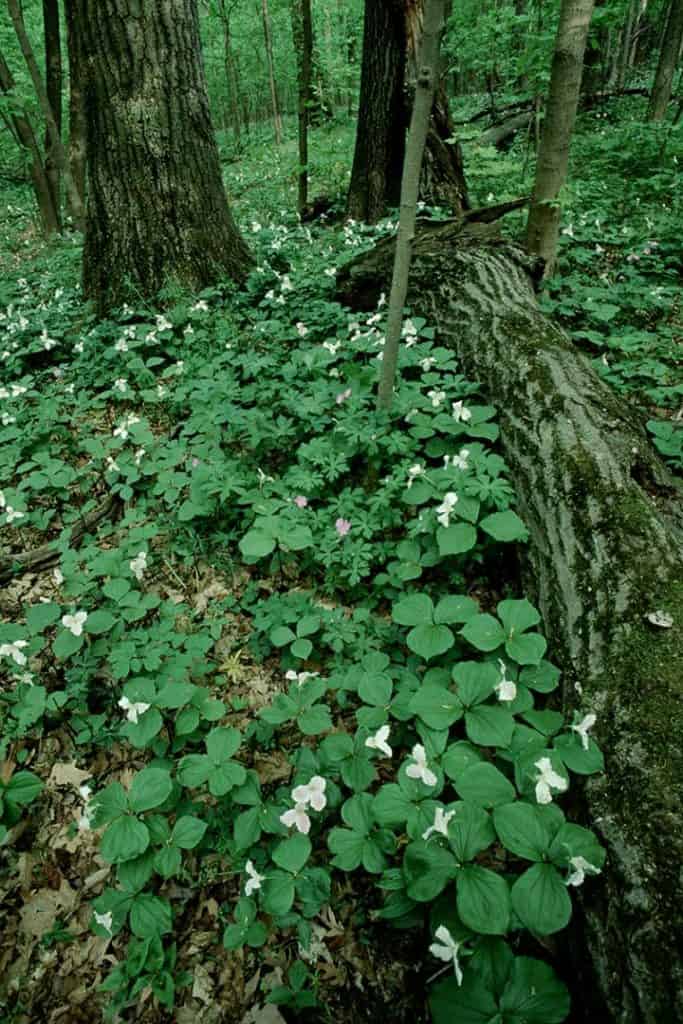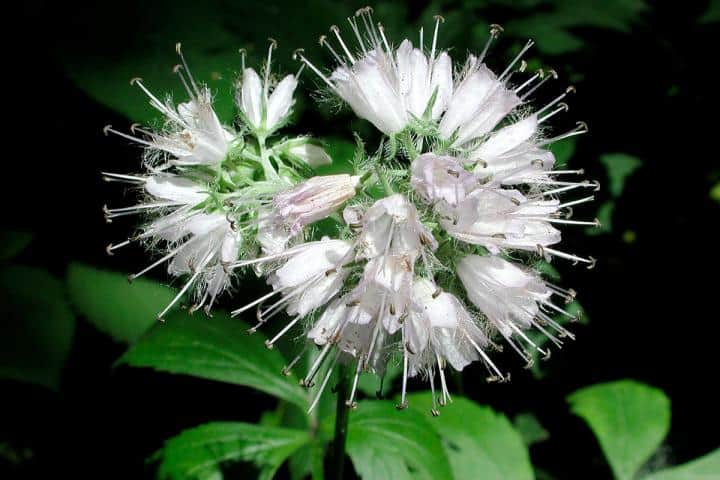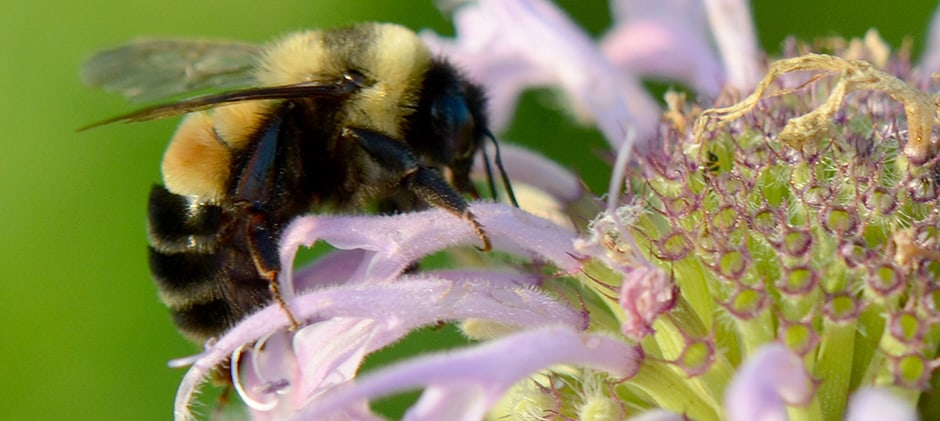Share this article
Forest conservation may boost bumblebee numbers
Conservation for bumblebees in Illinois is likely lacking in wooded areas where flowers are fewer but critical to their life cycle.
Researchers delved into a 22-year-long Illinois Natural History Survey on vegetation cover in the state’s grasslands, forests and wetlands to determine the resources available for bumblebees, like the endangered rusty patch bumblebee.
“It’s an amazingly useful resource where these great botanists are recording plant surveys in Illinois since 1997,” said John Mola, a research ecologist with the U.S. Geological Survey in Fort Collins, Colorado. “We just so happen to have this long-term data of plants within a core part of the habitat for an endangered bumblebee, and we thought we could take this data and use it in a unique way to look at how floral resources these bees rely on may or may not have changed over the study period.”
Mola said learning about how the rusty patch bumblebee may be affected by vegetation could help them learn more about pollinators in the Midwest in general, particularly on private lands. The surveys include data only on private lands.
Mola led a study published in the Journal of Applied Ecology where he and his colleagues looked at vegetation throughout the years across Illinois. Different floral resources are available to bumblebees in different areas at different times, Mola said. Bees that forage in forests in the spring, for example, may use open grassland in the summer.
The team looked at 262 private areas around the state since 1997. They noted whether the areas were preferred by bumblebees generally or whether they were specifically preferred by the rusty patched bumblebee (Bombus affinis).

Hydrophyllum virginianum, an important plant for bumblebees during the spring and early summer, grows on the forest floor.
Image Credit: Michael Jeffords and Susan Post
The researchers found a decline in bumblebee flower availability within forests for both general bumblebees and the rusty patch. They also saw losses in forest cover, but not much of a decline in plant richness in forests. Since queen bees use forests early in the season, Mola said, losing them can mean the failure of queen bees to nest and survive.
On grasslands, they found a different story. Flowers were widely available and have been on the rise since 1997. Mola said this is likely due to habitat conservation programs that tend to focus on grasslands. Still, the team found the total area of grassland in the state was declining due to the spread of development and cropland.
Mola said focusing conservation efforts on forested areas where invasive shrubs and overbrowsing by deer have pushed out native vegetation could benefit bumblebees. “By focusing on forests, more bumblebees can get a bit of a boost early in the season to better establish their colony,” he said. Conserving and managing the forests can include reintroducing fire or thinning out the forest to remove invasive shrubs and get more light penetrating down into the understory.

Queen bees need more flowering forest plants like this Geranium maculatum during the spring.
Credit: Michael Jeffords and Susan Post
Next, Mola plans to look closer at which plants queens focus on in the early season out on the landscape.
“Queen bumblebees, even though less numerous than workers, have the potential to represent hundreds of workers in the season,” he said. “They emerge as solitary individuals, and after they found their nest the colony can grow to hundreds of individuals. They might not be as numerous on the landscape, but they’re really demographically important.”
Header Image:
A rusty patched bumblebee forages on a flower of the bee balm of the genus Monarda.
Credit: U.S. Fish and Wildlife Service








